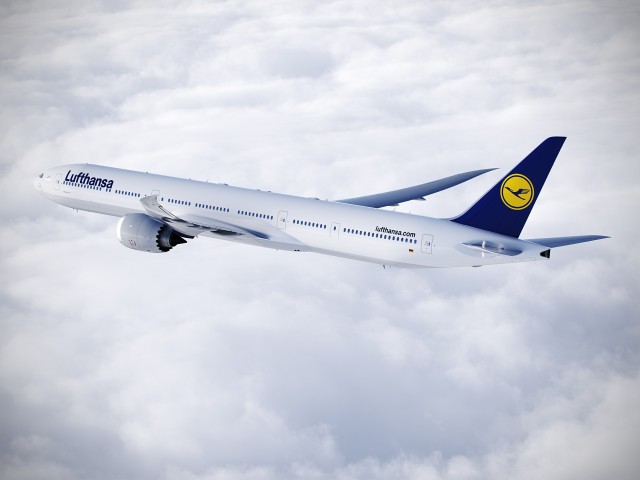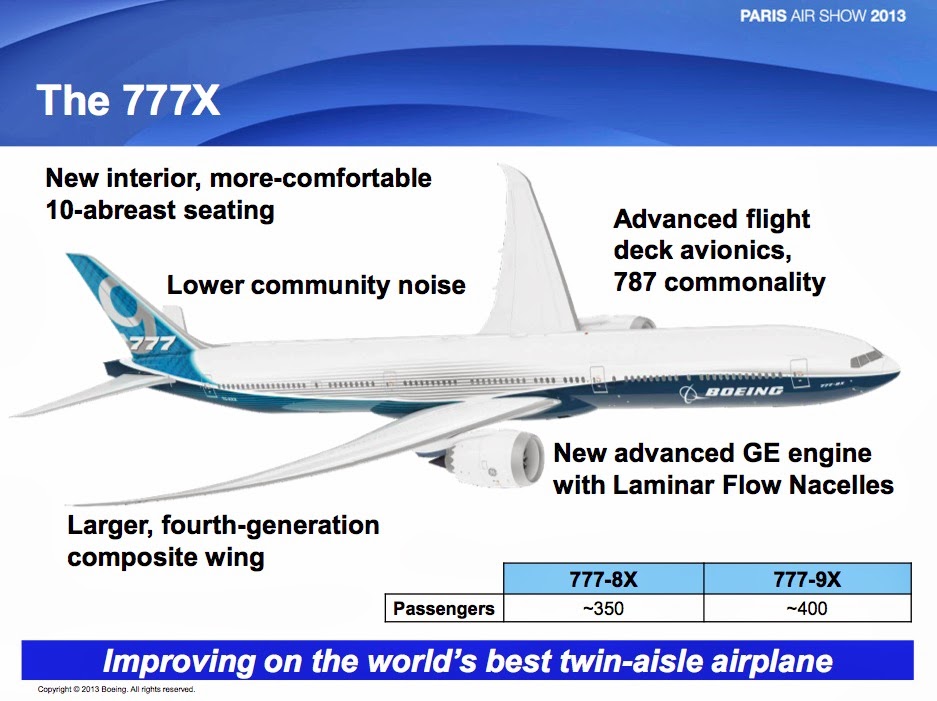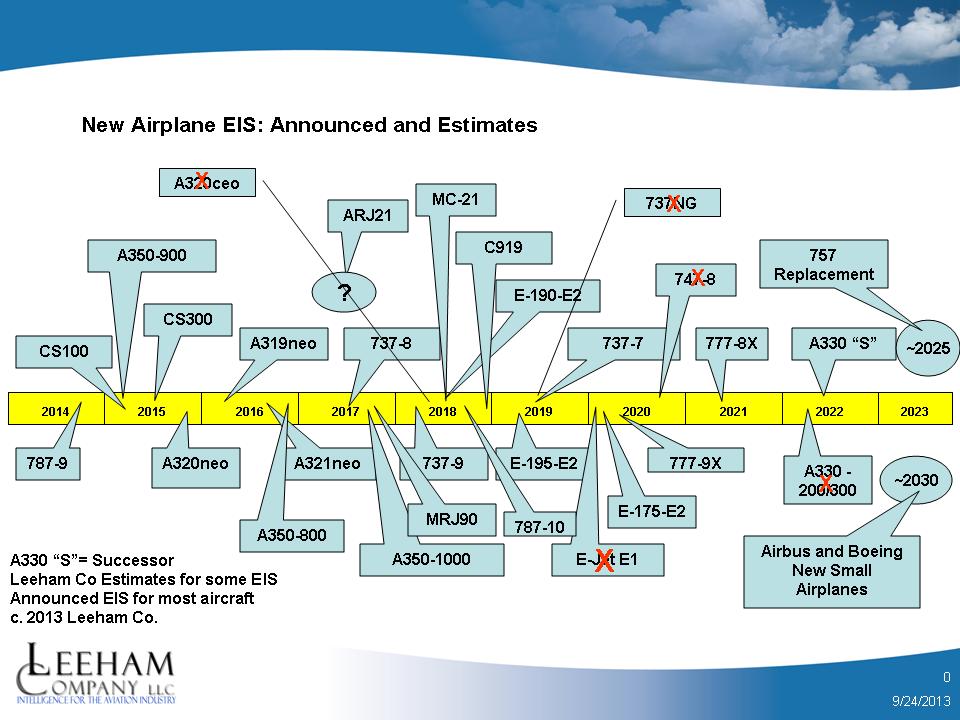Leeham News and Analysis
There's more to real news than a news release.
Odds and Ends: Contrary views of Mulally; Cathay considers 420-seat 777-9X; Long haul flight log; a walk in the park
Contrary views of Mulally: With increasing media speculation about the prospect of Alan Mulally returning to Seattle to take the helm of Microsoft, a company in need of strong and creative leadership, two interesting and contrary views of the former CEO of Boeing Commercial Airplanes emerged.
The first we’ll put up is from Steve Wilhelm at the Puget Sound Business Journal, who wrote this piece recalling Mulally. The second is an old Business Week article that is considerably less flattering.
Mulally was passed over to head The Boeing Co. twice. After the second time, he left to become CEO of Ford Motor Co., saving it from bankruptcy (rivals GM and Chrysler didn’t avoid this fate), and remaking it into a profitable entity.
Many at Boeing believe that had Mulally stayed, many of the problems that emerged from the 787 program would have been avoided. This is, of course, a matter of speculation, but there is no getting around that his successor, Scott Carson, as a finance expert and salesman, didn’t have the engineering background necessary to cope with the emerging debacle of the 787 and 747-8 programs.
Microsoft has been stagnant under the tepid leadership of Steve Ballmer. Mulally, at 67, is old by CEO standards, but he certainly would shake things up at the stodgy company.
A retrospective New York Times article talks with Mulally and looks at Boeing in May 2006. Four months later, Mulally was CEO of Ford.
Cathay considers 420-seat 777-9X: Cathay Pacific Airways is considering becoming a launch customer for the Boeing 777X, reports Aspire Aviation. The configuration considered is a 420-seat version. Aspire cites an internal CX newsletter.
We noted on September 10 that Air Canada is jamming in 458 seats in a Boeing 777-300ER. The 777-9X is somewhat larger so it’s obvious CX won’t be using a similar seat pitch or business/first class size as Air Canada. But at 420 seats, this, too, is solidly within the Very Large Aircraft sector. (Boeing insists the 777-9X is not a VLA, however.)
As with the Air Canada -300ER, and as we have written many times, the -9X makes the 747-8I irrelevant and, in our view, represents the final nail in the coffin of the poor-selling 747-8I. The 9X in an Air Canada configuration probably would easily push 450 seats, becoming a clear threat to the Airbus A380. We think this is why Airbus began touting 11 abreast coach seating for the dual-deck airplane, adding 40 seats to the capacity. So far as we know, no airline has bought into this concept.
The VLA market was fragmenting already with the current generation of aircraft (777, A330, 787 and soon the A350). It will shrink further with the 777-9X.
Airbus had maintained a consistent 20-year forecast of about 1,200-1,300 VLA passenger models since it launched the A380 in 2000. Boeing has reduced its forecast to a mere 540 VLAPs. Airbus released its latest 20 year forecast on September 24 in a press conference in London that continues to predict the same number of VLAs over the next 20 years. We’re already 13 years into the original Airbus 20 year forecast for VLAs, and the figure hasn’t changed much since then (in fact, it’s gone up slightly).
As we wrote way back in July, the A380 continues to struggle.
Long Haul Flight Log: This is priceless. And accurate. Hat tip to Mary Kirby.
An Aside: We often take our Golden Retriever to Soaring Eagle Park in King County for a hike. One morning this week, we came across this scene of backlit morning sun, some fall colors and a spider web (center of the picture). This Blackberry photo doesn’t do the scene justice, but we thought we’d share this example of Mother Nature’s work anyway.
Photo by Scott Hamilton
777X decision due in October; where will it be assembled?
Lufthansa Airlines announced an order for the Boeing 777-9X, but the program hasn’t officially been launched yet.

Source: Airline Reporter
The Boeing Co. Board of Directors is expected to do so in October. Boeing doesn’t reveal the date of its board meetings, but they are typically toward the end of the month. Formal launch of the program is widely anticipated to come at the Dubai Air Show Nov. 17-21, along with major orders from Emirates Airlines and others. Emirates’ order is expected to be for both the 406-seat 9X and the ultra-long range, 350-passenger 777-8X, the latter providing Emirates with the long-sought ability to provide full payload, non-stop service between Dubai and Los Angeles.

Source: Boeing
While launch of the 777X is a foregone conclusion, where it will be assembled isn’t. This is of keen interest to Washington State, where the current 777 family is assembled, and South Carolina, which is becoming a growing Boeing assembly site.
Boeing has purchased hundreds of acres of land in Charleston in multiple increments and now owns slight more land there than in Everett.
We believe Everett is the only logical place to assemble this derivative of an existing program, and there are many who think so, too. But there is a smaller group that thinks Boeing Chicago favors Charleston.
Here are the pros and cons of each:
Airbus announces 68 A320s, A333 “Lite” at Chinese air show
Airbus loves air shows as platforms for announcements, and the current event in China is no exception.
Airbus announced orders for 68 A320ceos and neos and launched the A330-300 Lite program (though no orders yet). Reports suggest Airbus expects the first Lite orders from China, hence the location and announcement at the air show.
Zhejiang Long Airlines signed an MOU for 11 ceos and 9 neos. This is a start-up carrier.
Qingdao Airlines ordered five ceos and 18 neos.
BOC Aviation, the long-established leasing company owned by the Bank of China, placed an order for 12 neos and 13 ceos.
The A333 has a range of 3,000nm and will carry about 400 passengers. The weight is 200 tons and Airbus says it will burn 15% less fuel than the all-up, 6,100nm version. Aviation Week has some additional detail.
Separately, Bloomberg reports that Vietjet (Vietnam) will order up to 100 A320 family airplanes. The order could be announced today, Bloomberg says.
- We’ve not commented on the Lufthansa Airlines order for Airbus A350-900s and Boeing 777-9s to any great extent because the deal was pretty straight-forward. But this Aviation Week article has a comment from the LH CEO saying it by-passed the 787-10 because its range (at 7,000nm) is to short. This is interesting in context of Boeing’s statements that the 787-10 will cover about 90% of the mission requirements of airlines. Just an observation.
Lufthansa splits wide-body order between Airbus and Boeing
Lufthansa Airlines announced its long-expected wide-body order, for 59 Airbus A350-900s and Boeing 777-9Xs.
Airbus won a firm order for 25 with options for 25 more. Boeing’s press release didn’t disclose options.
This is a big win for both companies in a hard-fought contest. LH had long said it expected to buy only from one company, and the split order means neither OEM came away empty handed. But Boeing did not get an order for the 787-10, which was part of the package being offered to LH. Nor did it receive an order for the 747-8I, which it had hoped to obtain as well.


